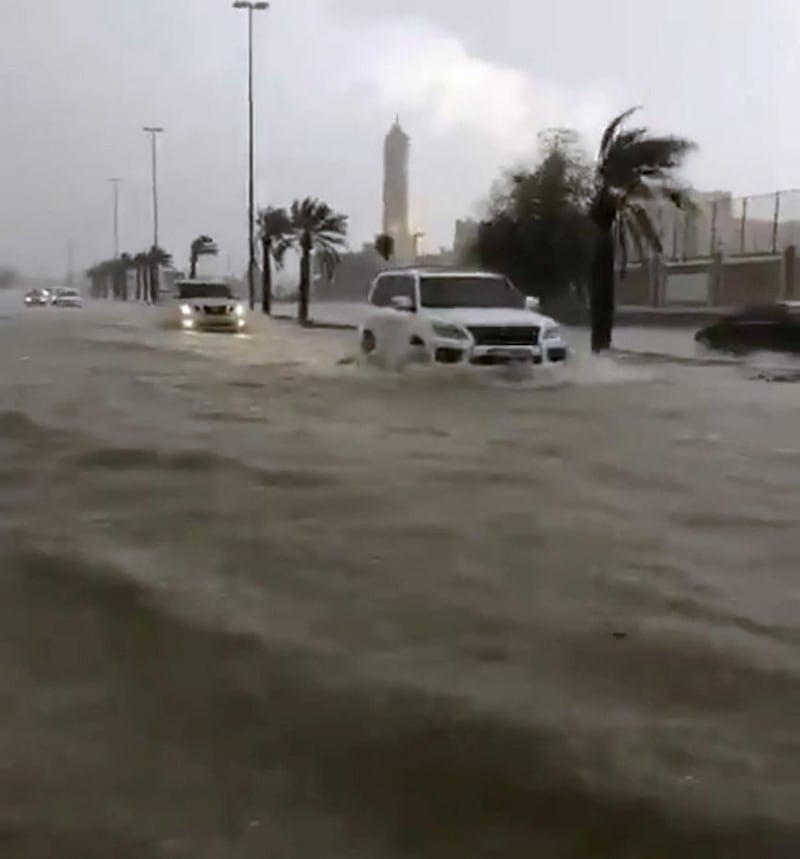Many people baked in the scorching summer heat on Friday - but parts of the UAE were lashed by flash floods, thunderstorms and lightning.
Videos posted online showed powerful 4x4s struggling to navigate flooded streets in Al Ain city. Other videos posted on Friday showed driving hail, dark skies and lashing rain.
ماشاء الله ، شاهد السيول بسبب الأمطار الغزيرة في شوارع منطقة الفوعة بمدينة العين قبل قليل #الامارات #مركز_العاصفة
— مركز العاصفة (@Storm_centre) July 19, 2019
١٩ يوليو ٢٠١٩ pic.twitter.com/OJjNfQlDSM
The footage was posted to Storm Centre, a social media channel that tracks the country's weather, and laid bare the extent of the downpours.
In one video, two children can be seeing playing in the rain, while in another part of the east several wadis overflowed.
The downpours stretched from Khor Fakkan in the north to Kalba in the south. Al Ain was particularly badly hit.
The National Centre of Meteorology (NCM) also posted videos of the weather on its social media channels. In one, a hand can be seen catching a large hailstone. Another shows lashing rain and lightning storms over Al Ain.
The NCM had warned earlier on Friday that rains could hit eastern parts of the country because of easterly winds that bring thunder clouds from the Indian ocean.
It cautioned on Saturday that more could be on the way up until Sunday afternoon. Gusts of up to 45kph could also kick up dust clouds.
During the summer, the monsoons bring water-soaked clouds from India to the Arabian Peninsula. This causes the phenomenon known as khareef in Oman, where the desert turns green, and it also brings rain to the UAE's mountainous east.
Cloud seeding planes are also active during the summer. About eight mission were conducted from the six weeks to July 8 this year - up from five in 2018.
Seeding involves shooting salt flares into a cloud. The salt naturally attracts water particles which then collide with others, get bigger and hopefully fall as rain.
But how much is hard to quantify, with the NCM stating more studies are needed.
"In winter we usually have clouds that come from west to east. Many don't touch the country during the winter so we don’t do seeding," said Khalid Al Obaidly, the NCM's head of cloud seeding.







